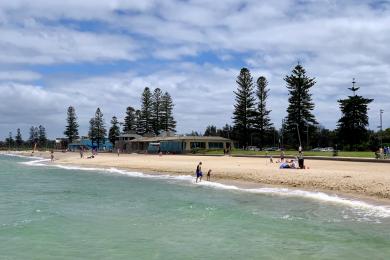Overview
The Port Jackson shark, belonging to the Hexanchidae family, is easily distinguished from other sharks by its unique appearance. It has a stout, eel-like body with a blunt head and a short, rounded snout. Its six gill slits, a defining characteristic of the Hexanchidae family, are located on the sides of its head. Unlike other sharks, the Port Jackson shark has only one dorsal fin, positioned far back on its body. Its coloration is typically grey to brown, often with darker blotches or spots.
Commonly found in:
- Japan
- China
- Taiwan
- Vietnam
- Thailand
- Malaysia
- Fiji
Over the past 13 years, there has been 1 recorded Port Jackson Shark attack. Of these attacks, they have occurred at sea and at the following beaches:
Size and Weight
- Size: Males average 3-4 feet when mature; females average 4-5 feet
- Weight: Males typically weigh 15-20 pounds; females 20-25 pounds
- Swimming speed: Both sexes swim at speeds of 2-3 mph
Interaction with Humans
- Interaction with Humans: Generally harmless, rarely aggressive
- Avoidance: Stay out of shallow coastal waters at night
- Activity: Nocturnal, most active at night
Lifespan and Diet
- Lifespan: Males live 20-25 years; females 25-30 years
- Diet: Crustaceans, mollusks, and small fish; uses powerful jaws to crush hard-shelled prey
Migratory Patterns
Port Jackson sharks exhibit seasonal migration patterns. They typically start their journey in southern Australia during the winter months, moving northward along the east coast towards Queensland as the water temperatures warm. In spring and summer, they return to their southern habitats. These sharks often migrate to specific breeding and feeding grounds, with some individuals traveling distances of up to 850 kilometers between Tasmania and New South Wales.


